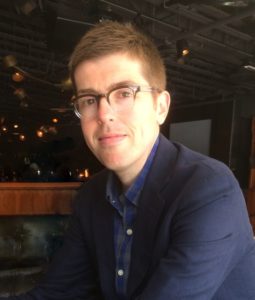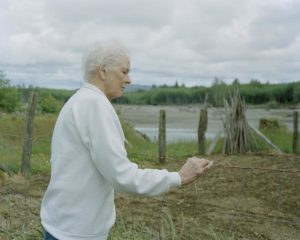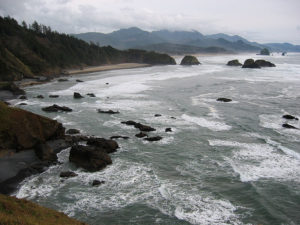S. TREMAINE NELSON interviews BRIAN SHOLIS

Brian Sholis is Associate Curator of Photography at the Cincinnati Art Museum. He writes about photography, landscapes, and American history, all of which topics are combined in his essay “Our Poor Perishable World,” appearing in Issue 08 of The Common. In this chat with Oregonian S. Tremaine Nelson, Sholis touches on the American West, beauty and destruction, and the similarities between fiction and photography.
*
S. Tremaine Nelson (SN): In your essay, “Our Poor Perishable World,” you describe the “awe such a landscape can inspire” in reference to the Oregon Coast. Has a photograph of such a place ever deepened the sense of awe you initially felt “in person” in a setting?
Brian Sholis (BS): I tend to admire photographs of the American West but have not traveled to the region often, so it’s difficult to say whether photographs have later deepened my experience of a given place. I will say that last summer I viewed Oregon’s coastal region through Robert Adams’s eyes. He makes photographs that can be described as lamentations and others that might be characterized as hopeful, and my reactions to the landscape oscillated between those poles. I was in awe of Haystock Rock at Cannon Beach, and of many of the beautiful forests, but that experience was always shaded by knowledge of how endangered those places are.
SN: You write about the “scrim of trees” left by loggers at the edge of a clear-cut range, and, growing up in Oregon, we always called this the “smokescreen,” hiding the real emptiness of the hillside. In Adams’s work, does he seek out the human correspondent to this setting, too: the loggers, the families who live on the land, the sort of people Ken Kesey documents in his novel Sometimes a Great Notion?
BS: Adams does not look at the people of Oregon; he is resolutely a landscape photographer, though of course the people are evident by the changes they’ve made to the land. Another photographer who lives in the Pacific Northwest and does more often depict people in his photographs is Eirik Johnson. His series (and book) “Sawdust Mountain” includes portraits among the landscapes; his more recent series “The Mushroom Camps” is more specifically about a group of mushroom hunters in the Oregon forests.

SN: What is the work of art that first awakened your sense of art’s potential and capability?
BS: As a child in Chicago I was drawn to the intimate and fantastical worlds of Joseph Cornell’s boxes, many of which are on permanent display at the Art Institute of Chicago. One of the first photography exhibitions I remember thinking about long after visiting was “Daido Moriyama: Stray Dog,” presented at Harvard’s art museum in 2001.
SN: You mention several apt comparisons between Marilynne Robinson’s writing and Adams’s photography. Could you talk about the differences between interpretation of literature and interpretation of photography? Is one more representative of reality than the other?
BS: Photographs are fictions; novels are exercises in creating images. Neither is more representative of reality, though my ability to understand the world profits from regular encounters with both.

SN: In your experience watching different viewers react to photographic art, would you say that people are more drawn to beauty or destruction?
BS: People are always drawn to beauty, but many—myself included—find beauty in images of destruction. Aesthetically beautiful photographs of destruction raise another set of questions, but they certainly can be seductive.
SN: Are you also a photographer?
BS: No, I am not. I enjoy taking pictures, but I do so with my phone and they are rarely more than snapshots.
SN: Now that you’re curating in the Cincinnati Art Museum, are there are upcoming exhibits you’re excited to share with the public?
BS: I am including a Robert Adams photograph in a display drawn from the museum’s collection titled “Human-Altered Landscapes.” It celebrates the influences of the “New Topographics” artists on the 40th anniversary of that landmark exhibition, and will be on view from April through July. In October, I am presenting the first solo exhibition in a North American museum of the celebrated German photographer Jochen Lempert.
*
Brian Sholis’s essay “Our Poor Perishable World” appears in Issue 08 of The Common.
S. Tremaine Nelson is a graduate of Vanderbilt University and founder of The Literary Man book blog.
Photo credits:
Courtesy of Eirik Johnson. www.eirikjohnson.com
Northern Oregon Coast from Creative Commons



